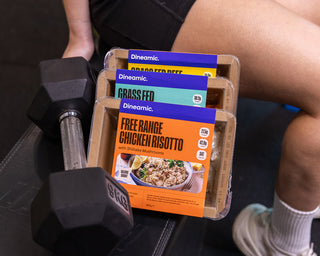
It’s the age-old question when it comes to food – is it still ok to eat? ‘Best before’ and ‘use-by’ dates can be tricky to navigate, which is why consumer survey studies have found that the simple misunderstandings & mix up of the two terms lead to approximately 31% of food wasted at a retail and consumer level. With over 5 million tonnes of food already ending up in landfill, its important now more than ever to clear the confusion between the two and avoid throwing out food that could be safe to eat.
So let’s dive in & take a look at what each means and how it affects the way you consume & throw out food!
Use-By
The ‘use-by’ date is the ‘last date in which food can be eaten safely, provided its been stored correctly according to the manufacturer’s instructions. These are usually found on perishable and short-shelf life goods (e.g. milk, meat, ready-made salads) where the food can be microbiologically unsafe before spoiling occurs. It’s a no brainer then that food cannot be sold if its past its use-by date.
If the meal in question is past its use-by date throw it out as it is no Bueno and shouldn’t be eaten for health and safety reasons.
Best Before
The ‘best-before’ date on the other hand is the ‘last date which foods are expected to retain their quality attributes (e.g. colour, taste, texture, flavour), provided its stored according to storage instructions and the packaging hasn’t been opened.’ If the food is past its best-before date its still safe to eat, it’s just no longer at its peak, quality wise that is. It’s also technically okay to sell food past its best before date if its ‘not spoiled, damaged, deteriorated or perished so that its unreasonable for human consumption.
Baked on or Baked For
Breads that carry a shelf life of 7 days or less can include the ‘baked on’ or ‘baked for’ date.
- Baked On – the most common of the two that you’ll find, this is the date that the bread was baked.
- Baked For – less commonly used, this date is no later than 12 hours after the time the bread was baked.
Other Dates?
Fortunately, unlike in the States you won’t see other date marking systems like ‘best if used by/before’ or ‘sell by’ dates as the Australian Food Standards gods (FSANZ) don’t prescribe it. Sell by dates are usually for store’s inventory management more than anything. ‘Packed’ dates (i.e. the date that the food was packed) can be seen on meat and poultry but must not be used for retail sale. This has nothing to do with the expected shelf life of products and acts more of an FYI.
Exceptions
You’ll find date markings on most packages whether it be at the local store or at a catering event. However, there are some products that don’t require a date mark; individual serves of ice cream, small packages of food (except when needing to be consumed by a certain date for health and safety reasons), foods where ‘best-before’ dates is more than two years or foods that are exempt from labelling altogether.
While it’s up to the food manufacturers to determine shelf life of the food, a lot of brain power and testing is done before a date is stamped. Once this is done, manufacturers must then validate their shelf life and substantiate their date marking. Sometimes though, manufacturers can be quite conservative with their date marking often setting the date earlier than what the testing indicates as no longer safe. Best advice is to use common sense if there’s clear spoilage or you’re in doubt, throw it out.
For more Info: Visit FSANZ Standard 1.2.5 Use By and Best Before Dates











